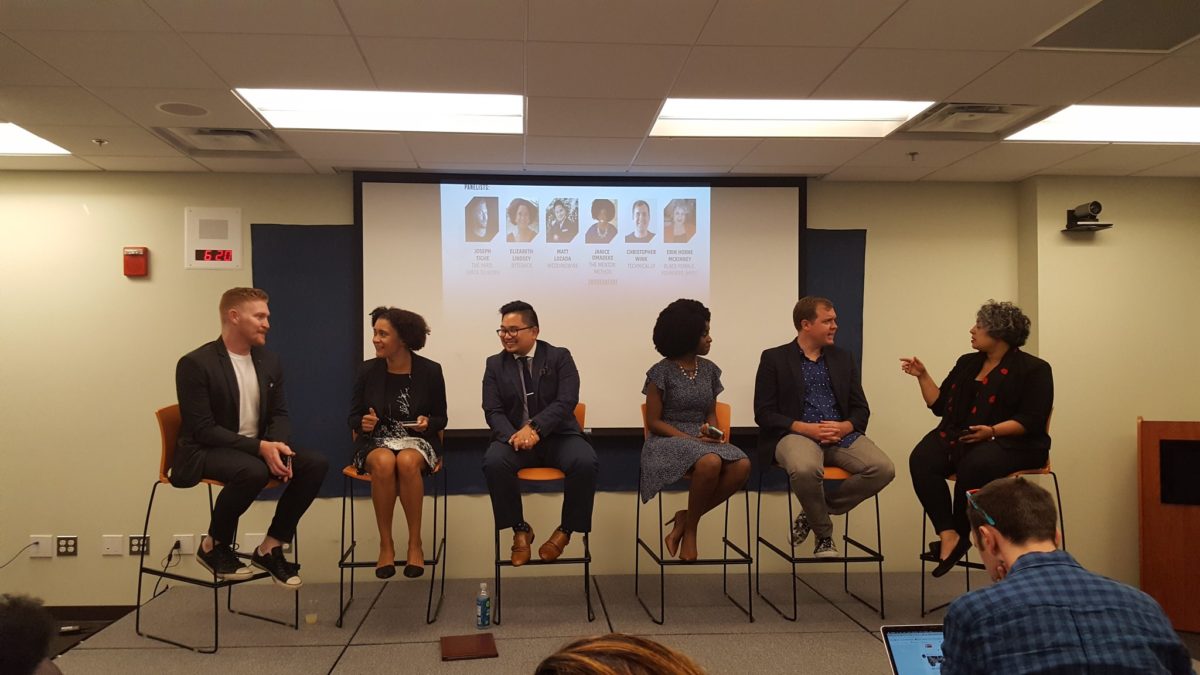Between the big and small ideas for approaching the yawning inclusion gap in tech, one of the consistent needs is to ask the right questions.
Think about job descriptions. List a college degree or a certain number of years of experience, and you just might chase away someone who can do the job but doesn’t have the resume credentials. Often that includes women, people of color and others who don’t come from the existing talent pipelines.
“What qualifications do we really need?” said Elizabeth Lindsey, the Princeton-educated Executive Director of ByteBack, a 20-year-old tech and career skills nonprofit. She says some of her group’s most compelling work is preparing D.C. residents for an economy that could easily pass them by.
“We need to broaden our view on how to find people,” she said.
Lindsey was part of a panel on Diversity and Inclusion during DC Startup Week, organized in part by The Mentor Method‘s founder Janice Omadeke, herself a champion of challenging structures to allow for more genuine inclusivity. She speaks often of diversity and inclusion not primarily in terms of social justice (though I’ve heard her say as much), but also in terms of economic impact and market needs. Indeed, the event’s conversation, which took place inside a classroom at the Global Policy Institute in front of 20 or so, focused much on the opportunity the conversation allowed.
“Some of the hungriest people don’t have degrees,” said Joseph Tighe, the director of people at The Yard, a Brooklyn-based coworking network that is opening its first D.C. location this fall. Tighe spoke about how he’s approaching hiring at his real estate firm with an eye toward representing the people it hopes to serve.
https://twitter.com/thesketchfactor/status/907404335528730626
How do you do that better? Make sure finalists for hiring you do include diversity (a true test on your hiring pipelines), leverage any access you have to be a chance to bring more women and people of color in and, of course, take a hard look at qualifications listed on jobs and roles, as Lindsey said. We also can take a hard look at goals.
“Inclusion is about whether everyone’s voice is heard,” said Matt Lozada, an account executive at Chevy Chase, Md.–based WeddingWire and a former recruiter. “Being equitable is who wants to be in the room but can’t get in.”
Everyone has a responsibility to see tech looking more representative of the communities it serves — that’s why this white male reporter was part of the conversation. But I have a lot more listening to do than speaking. Anyone who wants to build a company or a community that reaches its maximum output needs to, as well.
“Innovation comes from survival,” said Black Female Founders Cofounder and CEO Erin Horne McKinney, noting many underserved communities have long done just that. “This opportunity is too big to miss.”







